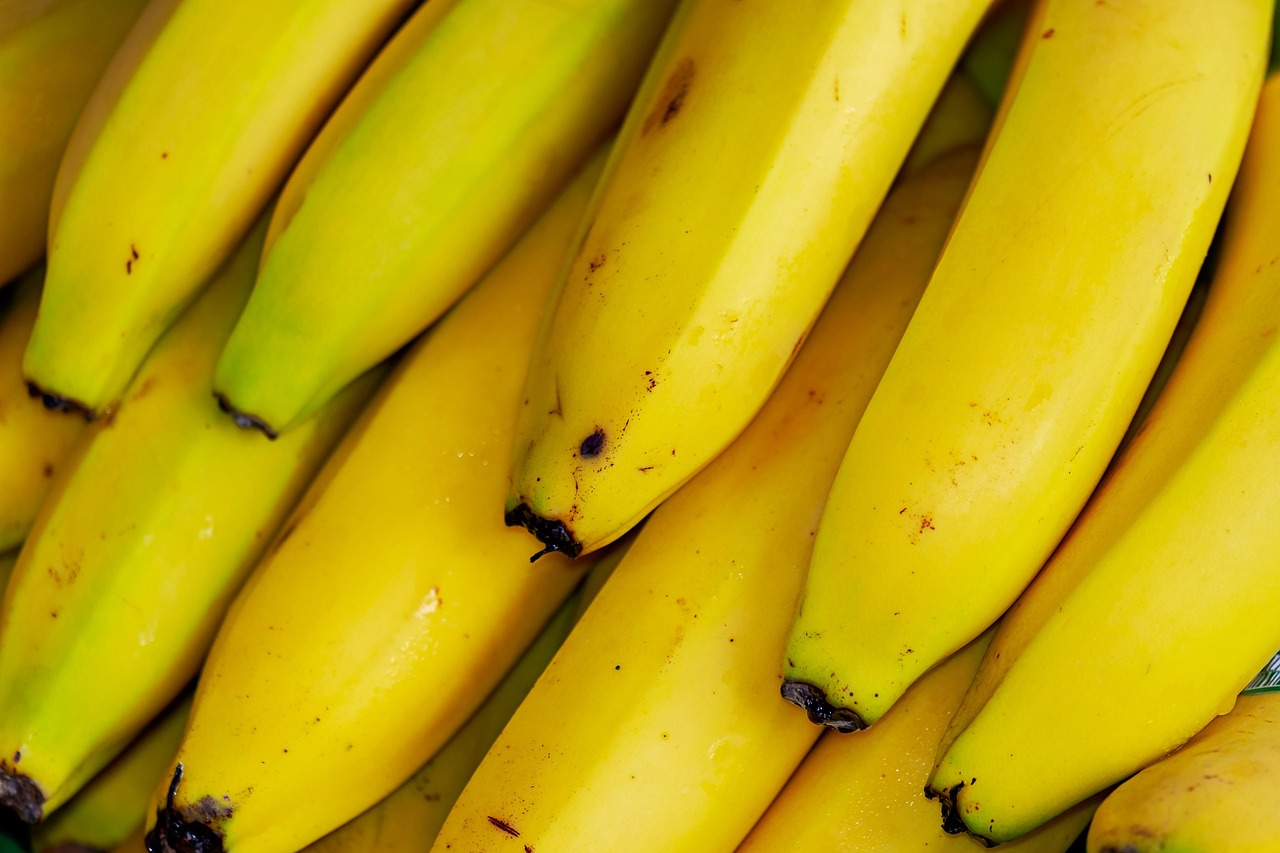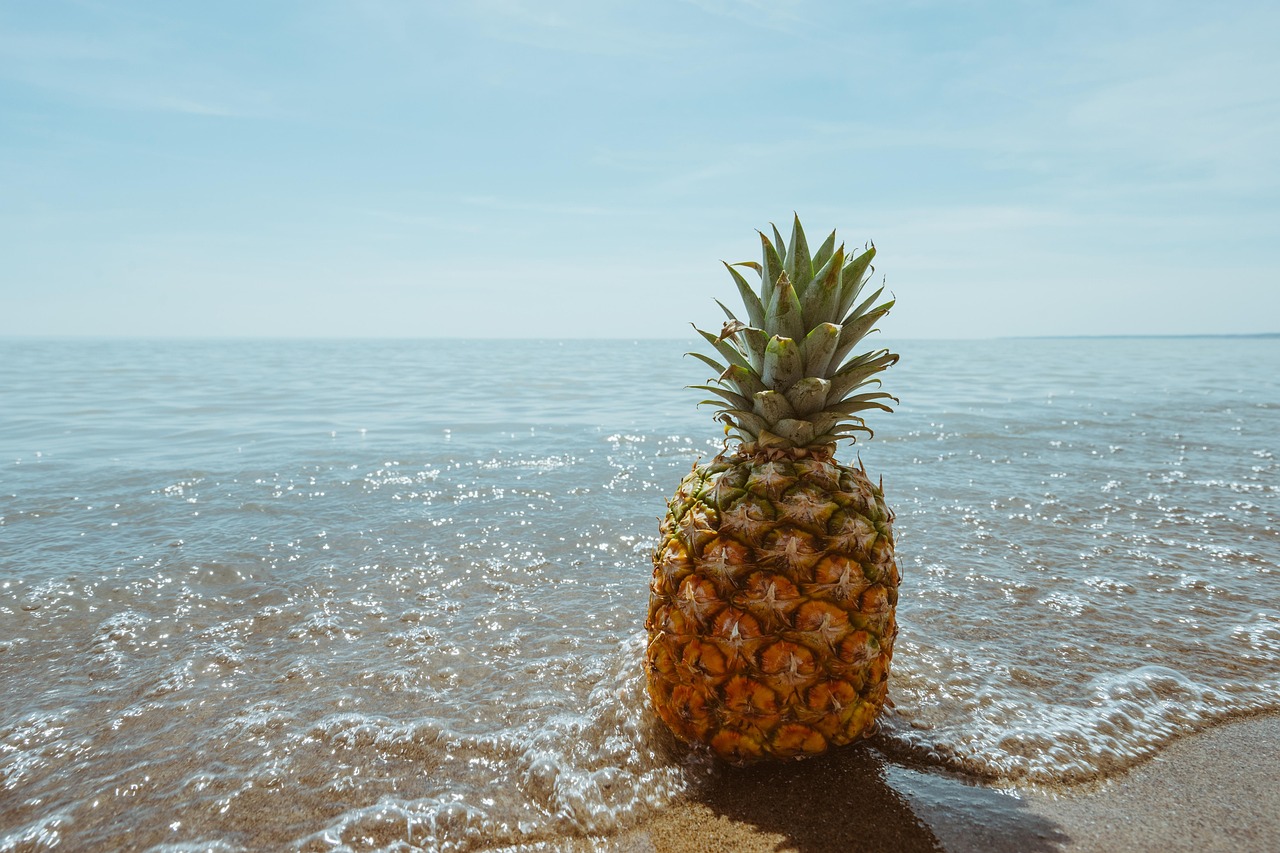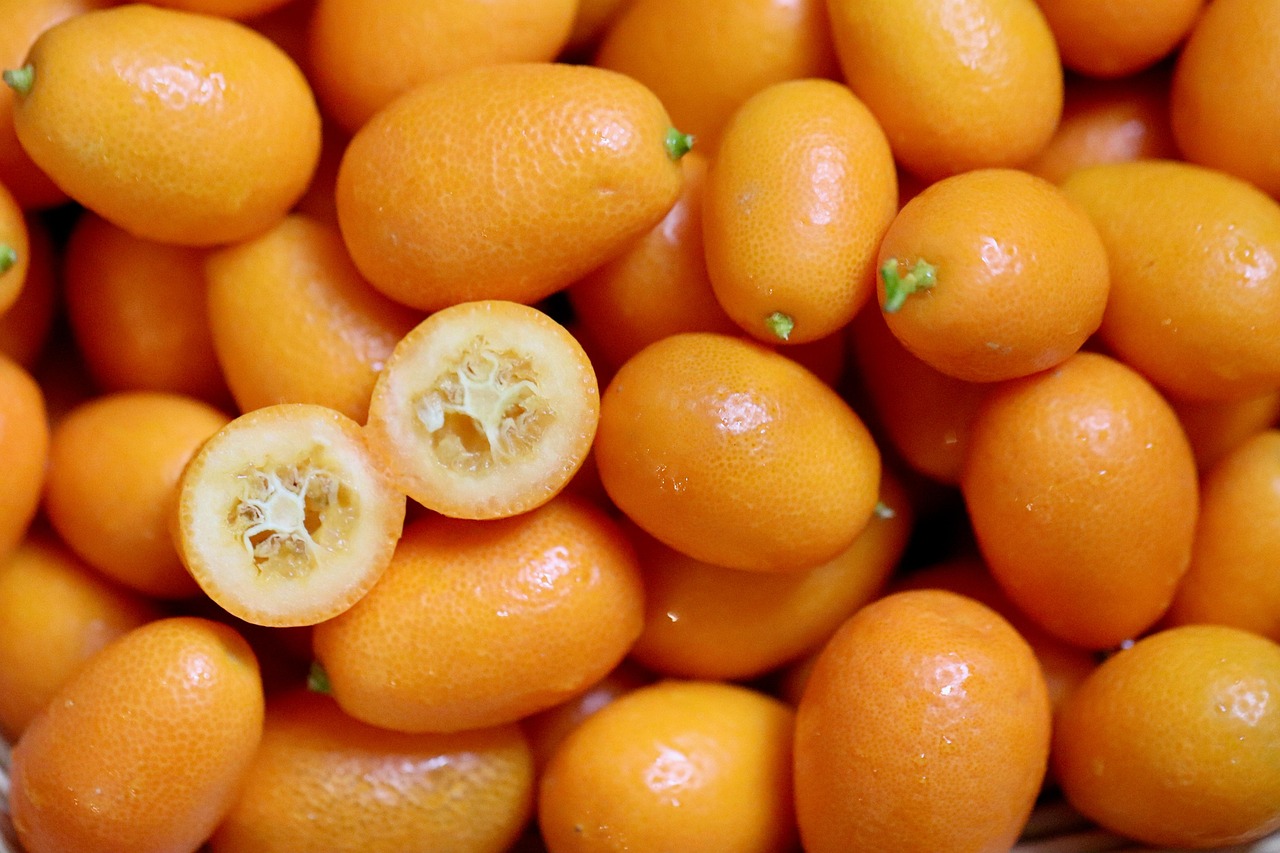Seasonal pruning is essential for maintaining healthy tropical fruit orchards. It enhances fruit quality, encourages new growth, and ensures better airflow. Proper timing and technique are crucial for maximizing yields and preventing disease.
Tropical fruit orchards offer a bounty of delicious fruits, but their maintenance requires specific care. Pruning is one of the most important practices that orchardists must engage in to ensure the health and productivity of their trees. Unlike temperate trees, tropical fruit trees have unique growth patterns and require careful timing for pruning to achieve the best results.

Understanding the seasonal growth cycles of tropical fruit trees is key to effective pruning. In most cases, tropical fruit trees grow continuously throughout the year, but they may have peak growing seasons based on local climate conditions. Therefore, proper scheduling of pruning activities is crucial to align with these growth phases. This guide will explore the best practices for seasonal pruning, focusing on timing, techniques, and tools necessary for optimal results.
Understanding Tropical Fruit Trees
Tropical fruit trees are diverse and vary significantly in their growth habits and requirements. Some popular tropical fruits include mangoes, papayas, bananas, and avocados. Each type of tree has specific characteristics that influence when and how they should be pruned.
Key characteristics of tropical fruit trees include:

| Fruit Type | Growth Habit | Pruning Timing |
|---|---|---|
| Mango | Fast-growing, large canopy | Before flowering |
| Papaya | Short-lived, rapid growth | After harvest |
| Banana | Herbaceous, sucker growth | Regularly throughout the year |
| Avocado | Moderate growth, dense foliage | After fruit set |
As shown in the table, different fruit trees have distinct growth habits and optimal pruning times. For instance, mango trees benefit from pruning before flowering to enhance fruit production. Conversely, papayas should be pruned after each harvest to maintain their structure and encourage new growth.
The Importance of Seasonal Pruning
Seasonal pruning serves multiple purposes in tropical fruit orchards. Among the most significant benefits are:
- Improved Air Circulation: Pruning helps reduce overcrowding in the canopy, allowing for better airflow. This reduces humidity levels within the tree and minimizes the risk of fungal diseases.
- Enhanced Sunlight Penetration: Proper pruning opens up the tree to more sunlight, which is essential for photosynthesis. Increased light exposure can lead to better fruit development.
- Encouragement of New Growth: Regular pruning stimulates new shoots, which can lead to higher yields in the following seasons.
- Pest Management: Pruning removes dead or diseased wood, which can harbor pests and diseases. This proactive approach reduces the chances of infestations.
The timing of pruning is crucial. Each tropical fruit tree responds differently to pruning at various times of the year. Understanding your specific tree’s needs will help you determine the best time for seasonal pruning. Additionally, it is essential to recognize that over-pruning can be detrimental. Only remove what is necessary to maintain tree health and productivity.

Pruning Techniques for Tropical Fruit Trees
When it comes to pruning techniques, there are several methods that can be employed based on the type of tree and its growth habits. Some commonly used techniques include:
- Thinning: This method involves removing entire branches or stems from the tree to improve airflow and reduce competition for resources among the remaining branches.
- Heading Back: In this technique, the tips of branches are cut back to promote bushier growth. This is particularly effective in trees like mangoes that tend to grow tall.
- Crown Reduction: This technique reduces the overall height of the tree while maintaining its natural shape. It is useful for controlling tree size and improving sunlight penetration.
- Removal of Suckers: Suckers are unwanted shoots that grow from the base or along the sides of the tree. Regular removal helps redirect energy towards fruit-bearing branches.
Each technique has its own advantages and may be utilized in combination depending on the specific requirements of the orchard. Additionally, using sharp and clean tools is critical to prevent damage and disease transmission during pruning.
The seasonal pruning of tropical fruit orchards requires knowledge of each tree’s unique characteristics. By understanding these traits and employing appropriate techniques, orchardists can ensure healthier trees and abundant harvests throughout the year.

Seasonal Timing for Pruning
The timing of pruning in tropical fruit orchards is crucial for achieving optimal results. Unlike temperate climates, where seasons are distinctly marked, tropical regions may have varying weather patterns that influence growth cycles. Understanding these cycles helps determine the best times for pruning.
Optimal Pruning Seasons
In tropical climates, the best time for pruning often coincides with the end of the rainy season or just before the flowering period. This timing allows for new growth to emerge during the upcoming growing season. Here are some specific recommendations based on common tropical fruit trees:
- Mango Trees: Prune during the dry season, ideally between late winter and early spring, to encourage flowering and fruit set.
- Papaya Trees: Prune after harvesting to allow for robust new growth and fruit production in the following cycle.
- Banana Plants: Continuous pruning throughout the year is recommended to remove old leaves and stimulate new sucker growth.
- Avocado Trees: Prune after the fruit has set, typically in late summer to early fall, to manage tree height and shape.
Monitoring local weather patterns will also help determine specific pruning times. For instance, if a late rainy season is expected, it may be advisable to delay pruning until conditions stabilize.
Tools and Equipment for Pruning
Having the right tools is essential for effective pruning. Quality equipment not only makes the job easier but also ensures clean cuts that promote healing. Below are some commonly used tools in tropical fruit orchard pruning:
- Hand Pruners: Ideal for small branches and detailed work.
- Loppers: Useful for cutting thicker branches that are out of reach.
- Saws: A pruning saw can handle larger branches that require more power.
- Hedge Shears: Effective for shaping and trimming foliage.
- Gloves and Safety Gear: Protect hands and eyes from potential hazards during pruning.
Always ensure that tools are sharpened regularly, as dull blades can damage branches and create entry points for disease. Additionally, disinfecting tools between uses can prevent the spread of pathogens among trees.
Pruning Techniques for Specific Tropical Fruits
Different types of tropical fruit trees require tailored pruning techniques to address their unique characteristics. Understanding these nuances will help improve overall orchard health and productivity.
Mango Tree Pruning
Mango trees thrive with minimal interference but benefit from strategic pruning. Key techniques include:
- Crown Thinning: Remove some inner branches to increase light penetration and air circulation.
- Heading Back: Cut back overly long branches to a lateral bud, encouraging a bushier growth form.
Papaya Tree Pruning
Papayas tend to grow rapidly. To manage their growth:
- Removing Fruitless Branches: Cut away branches that do not produce fruit to redirect energy to productive parts of the tree.
- Regular Harvesting: Frequent harvests will naturally encourage new growth. Ensure you prune after each harvest to maintain shape and vigor.
Banana Plant Pruning
Banana plants are herbaceous and produce suckers that require regular attention. Consider these techniques:
- Sucker Management: Remove excess suckers, keeping only the healthiest ones for future growth.
- Leaf Removal: Periodically trim dead or damaged leaves to focus energy on fruit production.
Avocado Tree Pruning
Avocado trees require careful pruning to maintain shape and productivity:
- Thinning Out Crowded Branches: Remove crowded branches to improve light exposure and air circulation.
- Crown Reduction: Control height by selectively reducing the size of the canopy while preserving its natural shape.
Pest and Disease Management through Pruning
Pest and disease management is an integral aspect of proper orchard maintenance. Pruning can play a proactive role in preventing infestations and outbreaks. Here are some strategies that combine pruning with pest management:
- Regular Inspections: After pruning, inspect trees for signs of pests or diseases. Early detection can prevent larger outbreaks.
- Clean Cuts: Ensure all cuts are clean to promote quick healing and reduce susceptibility to infections.
- Disease Removal: Immediately remove any diseased or dead wood from the orchard to prevent the spread of pathogens.
A well-maintained orchard not only reduces pest problems but also enhances overall tree vigor. By integrating pest management practices into your pruning routine, you can achieve healthier trees and better yields.
Common Challenges in Tropical Fruit Pruning
Pruning tropical fruit trees is not without its challenges. Orchardists may face various issues that can hinder effective pruning and overall tree health. Recognizing these challenges will help you prepare and adapt your techniques accordingly.
Environmental Factors
Tropical climates are characterized by high humidity, varying rainfall, and intense sunlight. These environmental factors can impact the growth patterns of trees and influence pruning practices.
- Excessive Rainfall: Heavy rains can lead to waterlogged soil, which affects root health and tree stability. Trees may develop shallow roots that make them susceptible to toppling during storms. Pruning during drier periods can minimize stress on the trees.
- High Humidity: Elevated moisture levels create an environment conducive to fungal diseases. Regular pruning to improve airflow is essential to combat potential outbreaks.
- Sunlight Intensity: Intense sunlight can scorch leaves if trees are not adequately shaded. Careful pruning can help manage canopy density and protect the tree from sunburn.
Pest Infestations
Pests can pose significant threats to tropical fruit trees. While pruning helps manage pest populations, it is essential to be vigilant about potential infestations.
- Fruit Flies: These pests lay eggs in ripening fruit, leading to decay. Regularly inspect trees and remove affected fruits promptly.
- Scale Insects: Scale insects can weaken trees by sucking sap. Prune heavily infested branches and consider using horticultural oils to control the population.
- Aphids: Aphids can cluster on young leaves, causing stunted growth. A strong spray of water can dislodge them, but severe cases may require targeted insecticides.
Seasonal Pruning Strategies
Adopting appropriate seasonal strategies for pruning can significantly enhance the health and productivity of tropical fruit orchards. Here are some effective strategies based on specific seasons:
Pre-Flowering Pruning
Before the flowering season, pruning can effectively shape trees and promote better fruiting. Key practices include:
- Selective Thinning: Remove crowded branches to enhance light penetration, which is vital for flower production.
- Crown Shaping: Shape the crown to maintain a balanced structure, preventing broken limbs during flowering.
Post-Harvest Pruning
After harvesting fruit, it is essential to prepare trees for the next growing cycle. Post-harvest strategies include:
- Removing Old Fruit and Leaves: Clear away any remaining fruit and dead leaves to minimize pest habitats.
- Encouraging New Growth: Light pruning can stimulate fresh shoots, ensuring a robust crop in the following season.
Annual Maintenance Pruning
Throughout the year, regular maintenance pruning is necessary to keep trees healthy and productive. This includes:
- Sucker Removal: Continuously remove suckers that drain energy from the main plant.
- Dead Wood Removal: Regularly inspect and cut away any dead or diseased wood to prevent the spread of issues.
The Role of Fertilization in Pruning
Fertilization plays a critical role in conjunction with pruning practices. Proper fertilization enhances tree vigor, which is especially important following significant pruning events.
Nutrient Requirements
Tropical fruit trees have specific nutrient needs that vary based on the type of fruit being grown. Common nutrients required include:
- Nitrogen: Vital for leaf growth and overall vigor.
- Phosphorus: Important for root development and flowering.
- Potassium: Enhances fruit quality and resistance to diseases.
Fertilization Timing
The timing of fertilization should align with pruning activities and the growing season. Recommended practices include:
- Pre-Pruning Fertilization: Apply fertilizers before the flowering season to support healthy growth and flowering.
- Post-Pruning Fertilization: After heavy pruning, provide a balanced fertilizer to help trees recover quickly and promote new growth.
Monitoring Tree Health Post-Pruning
After completing pruning activities, ongoing monitoring of tree health is essential. Keeping an eye on recovery will ensure that trees remain productive and resilient.
- Observe New Growth: Monitor for healthy new shoots and leaves emerging after pruning.
- Pest Monitoring: Continue inspecting for signs of pests or diseases that may arise following pruning.
- Nutrient Deficiencies: Watch for signs of nutrient deficiencies, such as yellowing leaves or stunted growth, which may require addressing through additional fertilization.
A proactive approach to monitoring will help maintain tree health and ensure the success of your tropical fruit orchard through effective seasonal pruning practices.
Final Considerations for Successful Pruning
Effective pruning is a critical aspect of managing tropical fruit orchards. It not only influences the health and productivity of the trees but also plays a significant role in pest management and disease prevention. As you engage in seasonal pruning, consider additional factors that can further enhance your orchard’s success.
Training Young Trees
Training young tropical fruit trees is essential for establishing a strong structure. Proper training during the initial years can reduce future maintenance and improve fruit production. Here are some key practices:
- Choosing a Central Leader: For trees like mangoes and avocados, select a central leader shoot that will serve as the main trunk. Prune competing shoots to ensure this leader develops strong and straight.
- Establishing Scaffolding Branches: Early in the tree’s life, select and promote several strong lateral branches to create a balanced canopy. This will help support fruit loads in later years.
- Regular Shaping: Use light pruning to guide the growth direction of young trees and maintain a desirable shape. Aim for an open center to enhance sunlight exposure.
Soil Health and Management
Soil health is integral to the success of any orchard. Healthy soil supports robust root systems, which are vital for nutrient uptake and overall tree vitality. Consider the following practices:
- Soil Testing: Conduct regular soil tests to assess nutrient levels and pH. This will inform your fertilization strategy and help correct any deficiencies.
- Organic Matter Addition: Incorporate organic materials such as compost or well-rotted manure to improve soil structure and nutrient content.
- Crop Rotation: Implement crop rotation with cover crops to enhance soil health and disrupt pest cycles.
Water Management
Proper water management is vital for the growth and development of tropical fruit trees. Over- or under-watering can lead to stress and disease susceptibility. Here are some strategies to consider:
- Irrigation Systems: If rainfall is inconsistent, consider installing a drip irrigation system for efficient watering. This method delivers water directly to the root zone and minimizes waste.
- Drought Management: During dry periods, monitor soil moisture levels closely. Implement mulching techniques to retain moisture and regulate soil temperature.
- Drainage Considerations: Ensure that water does not pool around tree bases, as this can lead to root rot. Use contour planting or raised beds if drainage is a concern.
Conclusion
Seasonal pruning is an essential practice for maintaining healthy tropical fruit orchards. By understanding the unique requirements of each type of tree, orchardists can implement effective pruning techniques that promote growth, improve fruit quality, and manage pests efficiently. Additionally, integrating proper fertilization, water management, and soil care will create a holistic approach to orchard management.
As you engage in these practices, remember that monitoring tree health post-pruning is equally important. Observing new growth, checking for pests, and addressing nutrient deficiencies will ensure that your trees remain resilient and productive throughout their lifecycle.
With diligence and care, your tropical fruit orchard can thrive, providing bountiful harvests year after year. Adapting these seasonal pruning guidelines will not only enhance the health of your trees but also contribute to sustainable agricultural practices that benefit the environment and local ecosystems.
By fostering a deeper understanding of your orchard’s needs and employing comprehensive management strategies, you can cultivate thriving tropical fruit orchards that yield high-quality produce for consumers and contribute positively to the agricultural landscape.
